- Home
- Lord Dunsany
In the Land of Time
In the Land of Time Read online
Table of Contents
Title Page
Copyright Page
Introduction
I. - PEGĀNA AND ENVIRONS
The Gods of Pegāna
Time and the Gods
A Legend of the Dawn
In the Land of Time
The Relenting of Sarnidac
The Fall of Babbulkund
II. - TALES OF WONDER
The Sword of Welleran
The Kith of the Elf-Folk
The Ghosts
The Fortress Unvanquishable, Save for Sacnoth
Blagdaross
Idle Days on the Yann
A Shop in Go-by Street
The Avenger of Perdóndaris
The Bride of the Man-Horse
III. - PROSE POEMS
Where the Tides Ebb and Flow
The Raft-Builders
The Prayer of the Flowers
The Workman
Charon
Carcassonne
Roses
The City
IV. - FANTASY AND REALITY
The Wonderful Window
The Coronation of Mr. Thomas Shap
The City on Mallington Moor
The Bureau d’Echange de Maux
The Exiles’ Club
Thirteen at Table
The Last Dream of Bwona Khubla
V. - JORKENS
The Tale of the Abu Laheeb
Our Distant Cousins
The Walk to Lingham
The Development of the Rillswood Estate
A Life’s Work
VI. - SOME LATE TALES
The Policeman’s Prophecy
The Two Bottles of Relish
The Cut
Poseidon
Helping the Fairies
The Romance of His Life
The Pirate of the Round Pond
Explanatory Notes
IN THE LAND OF TIME AND OTHER FANTASY TALES
EDWARD JOHN MORETON DRAX PLUNKETT, 18th Baron Dunsany was born in London in 1878, the scion of an Anglo-Irish family that could trace its ancestry to the twelfth century. In 1905 he self-published The Gods of Pegaāna, and its critical and popular success impelled the publication of numerous other collections of short stories, including A Dreamer’s Tales (1910), The Book of Wonder (1912), and The Last Book of Wonder (1916). Dunsany also distinguished himself as a dramatist, and his early plays—collected in Five Plays (1914) and Plays of Gods and Men (1917)—were successful in Ireland, England, and the United States. Dunsany was seriously injured during the Dublin riots of 1916, and he also saw action in World War I as a member of the Coldstream Guards.
In the 1920s Dunsany began writing novels, among them The King of Elfland’s Daughter (1924) and The Blessing of Pan (1927). He also wrote many tales of the loquacious clubman Joseph Jorkens, eventually collected in five volumes. His later plays include If (1921), Plays of Near and Far (1922), Seven Modern Comedies (1928), and Plays for Earth and Air (1937). By the 1930s, encouraged by W. B. Yeats and others to write about his native Ireland, he produced The Curse of the Wise Woman (1933), The Story of Mona Sheehy (1939), and other novels. His later tales were gathered in The Man Who Ate the Phoenix (1949) and The Little Tales of Smethers (1952), but many works remain uncollected. Lord Dunsany died at Dunsany Castle in County Meath, Ireland, in 1957. He is recognized as a leading figure in the development of modern fantasy literature, influencing such writers as J. R. R. Tolkien, H. P. Lovecraft, and Ursula K. Le Guin.
S. T. JOSHI is a freelance writer and editor. He has edited Penguin Classics editions of H. P. Lovecraft’s The Call of Cthulhu and Other Weird Stories (1999) and The Thing on the Doorstep and Other Weird Stories (2001), as well as Algernon Blackwood’s Ancient Sorceries and Other Strange Stories (2002). Among his critical and biographical studies are The Weird Tale (1990), Lord Dunsany: Master of the Anglo-Irish Imagination (1995), H. P. Lovecraft: A Life (1996), and The Modern Weird Tale (2001). He has also edited works by Ambrose Bierce, Arthur Machen, and H. L. Mencken, and is compiling a three-volume Encyclopedia of Supernatural Literature. He lives with his wife in Seattle, Washington.
PENGUIN BOOKS
Published by the Penguin Group
Penguin Group (USA) Inc., 375 Hudson Street, New York, New York 10014, U.S.A.
Penguin Books Ltd, 80 Strand, London WC2R 0RL, England
Penguin Books Australia Ltd, 250 Camberwell Road, Camberwell, Victoria 3124, Australia
Penguin Books Canada Ltd, 10 Alcorn Avenue, Toronto, Ontario, Canada M4V 3B2
Penguin Books India (P) Ltd, 11 Community Centre, Panchsheel Park, New Delhi - 110 017, India
Penguin Books (N.Z.) Ltd, Cnr Rosedale and Airborne Roads, Albany, Auckland, New Zealand
Penguin Books (South Africa) (Pty) Ltd, 24 Sturdee Avenue, Rosebank, Johannesburg 2196, South Africa
Penguin Books Ltd, Registered Offices:
80 Strand, London WC2R 0RL, England
First published in Penguin Books 2004
Introduction and notes copyright © S. T. Joshi, 2004
All rights reserved
Published by arrangement with the Trustees of the Estate of Lord Dunsany. © Dunsany Will Trust.
LIBRARY OF CONGRESS CATALOGING IN PUBLICATION DATA
Dunsany, Edward John Moreton Drax Plunkett, Baron, 1878-1957.
In the land of time, and other fantasy tales / by Lord Dunsany ; edited with an introduction and notes
by S. T. Joshi.
p. cm.
ISBN : 978-1-4406-5026-0
1. Fantasy fiction, English. I. Joshi, S. T., 1958- II. Title.
PR6007.U6A6 2004
823’.912—dc21 2003054901
The scanning, uploading and distribution of this book via the Internet or via any other means without the permission of the publisher is illegal and punishable by law. Please purchase only authorized electronic editions and do not participate in or encourage electronic piracy of copyrighted materials. Your support of the author’s rights is appreciated.
http://us.penguingroup.com
Introduction
“No one can imitate Dunsany, and probably everyone who’s ever read him has tried.”1 This perspicacious comment by C. L. Moore underscores both the devotion, extending to a kind of reverential adulation, elicited in readers of the fantasy fiction of Lord Dunsany (1878-1957) and the extent to which subsequent writers in the fantasy tradition have striven to capture dim echoes of the crystalline beauty of Dunsany’s literary creation. Largely unknown to even the average literate reader, and merely a hallowed name to many enthusiasts of imaginative literature, Dunsany can nevertheless be seen as the source and inspiration of much of the writing that followed in his wake; such figures as H. P. Lovecraft, J. R. R. Tolkien, Fritz Leiber, Ursula K. Le Guin, and Moore herself are deeply in Dunsany’s debt for the example he set as a prose stylist and as a creator of an entire universe of shimmering fantasy.
The notion that Edward John Moreton Drax Plunkett, who became the eighteenth Baron Dunsany (pronounced Dun-SAY-ny) upon his father’s death in 1899, would become a central figure in twentieth-century fantasy would have struck the author himself as little short of fantastic. Certainly there was little in his background or early upbringing to suggest that Dunsany would be anything other than an average scion of the Anglo-Irish aristocracy. His birth in London on July 24, 1878, is not insignificant, for it highlighted the fact that Dunsany would remain Anglo-Irish to the end of his days, with perhaps a slightly greater emphasis on the first element of that compound. A devoted Unionist who loathed the Nationalists who wished to tear Ireland away from Great Britain (in later years he would speak bitterly of the “Disunited Kingdom”), Dunsany regularly alternated his living quarters from Dunsany Castle in County Meath t
o his home at Dunsall Priory, Shoreham, Kent. During his early education, at Eton and Sandhurst, he showed no particular literary bent; and his first published work, a mediocre poem in the Pall Mall Magazine for September 1897, did little to indicate that Dunsany would, in the course of a fifty-year career, produce dozens of novels and plays and hundreds of short stories and poems, and would receive accolades from both sides of the Atlantic and from critics ranging from Rebecca West and Graham Greene to H. L. Mencken and William Rose Benét.
But then, in 1904, Dunsany took it into his mind to write The Gods of Pegaāna. Because he had no literary reputation, he was forced to subsidize its publication by Elkin Mathews the next year; but never again would Dunsany have to pay for the issuance of any of his work. This very slim volume, scarcely twenty thousand words in length, created a sensation among both readers and critics—especially after a favorable review by the poet Edward Thomas in the London Daily Chronicle—and could well be said to have introduced something quite new in literature. What Dunsany had done was to create an entire cosmogony, complete with a pantheon of ethereal but balefully powerful gods—a cosmogony, however, whose aim was not the fashioning of an ersatz religion that made any claim to metaphysical truth, but rather the embodiment of Oscar Wilde’s imperishable dictum, “The artist is the creator of beautiful things.”2 For Dunsany, who was probably an atheist, the creator god Mäna-Yood-Sushai was not a replacement of either the jealous god of the Old Testament or the loving god of the New, but a symbol for the transience and ephemerality of all creation: it is not through any conscious act that Mäna brought the worlds into existence; those worlds are, instead, merely the dreams that arise in his mind, ruled over by “small gods” who, nevertheless, exercise awesome power over their little realms. One day Skarl, whose continual drumming keeps Mäna asleep and dreaming, will cease to pound his drum, and Māna will wake, and the worlds will vanish like bubbles in the air. . . .
What could possibly have led Dunsany to fashion such an extraordinary universe of pure imagination? The literary influences operating on his work are difficult to specify, especially since Dunsany, although the author of three substantial autobiographies, is himself rather cagey in speaking of his literary antecedents. It has long been recognized that both the archaic cast and the stately cadences of Dunsany’s prose style derive from his thorough familiarity with the language of the King James Bible. But the multiplicity of gods in Dunsany’s pantheon, as well as their creation in a spirit of tenuous beauty rather than cosmic truth, may also suggest the influence of Greco-Roman mythology, and Dunsany himself admits as much. His inability to master Greek in youth “left me with a curious longing for the mighty lore of the Greeks, of which I had had glimpses like a child seeing wonderful flowers through the shut gates of a garden; and it may have been the retirement of the Greek gods from my vision after I left Eton that eventually drove me to satisfy some such longing by making gods unto myself, as I did in my first two books.”3 But a philosophical influence can also be conjectured. Dunsany read Nietzsche in 1904,4 just around the time he wrote The Gods of Pegaāna, and we can detect the presence of the German iconoclast in numerous conceptions and perhaps even in its ponderous phraseology, so similar to the prose-poetic rhythms of Thus Spake Zarathustra. In effect, Dunsany was seeking to fuse the naïveté and spirit of wonder that had led primitive humanity to invent its gods with a very modern sensibility that recognized the insignificance of mankind amidst those incalculable vortices of space and time that modern science had uncovered.
Dunsany went on to produce, over the next decade and a half, perhaps the most remarkable body of fantasy literature that the twentieth century can claim: the story collections Time and the Gods (1906), The Sword of Welleran (1908), A Dreamer’s Tales (1910), The Book of Wonder (1912), Fifty-one Tales (1915), The Last Book of Wonder (1916), and Tales of Three Hemispheres (1919), and two collections of dramas, Five Plays (1914) and Plays of Gods and Men (1917). These volumes are, however, far from constituting a uniform or monolithic body of work. It is true that, as Dunsany remarked, Time and the Gods is an avowed sequel to The Gods of Pegaāna, elaborating upon the Pegāna mythology and emphasizing the transience of the gods themselves in the face of the unrelenting scythe of Time; and several tales in other volumes—notably “The Sword of Welleran” and “The Fortress Unvanquishable, Save for Sacnoth”—could be said to have initiated the subgenre of “sword and sorcery,” in which heroic battles in fantastic lands are the focus. But in a substantial majority of other tales the “real” world begins to encroach insidiously upon the realm of pure imagination, and it is this dynamic fusion of reality and fantasy that frequently engenders some of the most evocative and poignant moments in Dunsany’s early work.
And yet, that “real” world was never absent from Dunsany’s imagination, if we are to take him at his own word. In noting how, at an early age, he saw a hare in the garden of Sir Joseph Prestwich, Dunsany goes on to remark in his first autobiography, Patches of Sunlight (1938):
If ever I have written of Pan, out in the evening, as though I had really seen him, it is mostly a memory of that hare. If I thought that I was a gifted individual whose inspirations came sheer from outside earth and transcended common things, I should not write this book; but I believe that the wildest flights of the fancies of any of us have their homes with Mother Earth.5
A little later he writes more generally:
The source of all imagination is here in our fields, and Creation is beautiful enough for the furthest flights of the poets. What is called realism only falls far behind these flights because it is too meticulously concerned with the detail of material; mere inventories of rocks are not poetry; but all the memories of crags and hills and meadows and woods and sky that lie in a sensitive spirit are materials for poetry, only waiting to be taken out, and to be laid before the eyes of such as care to perceive them.6
Many of Dunsany’s devotees, who have cherished his early work precisely because of its otherworldly remoteness, will be startled by these passages; but these words will gain still more relevance when we consider the long course of Dunsany’s later writing.
The most remarkable feature of Dunsany’s early tales and plays is their prose style; but the essence of that style has frequently been misconstrued. Dunsany’s style is not nearly as dense or adjective-laden as of other writers of poetic prose—John Lyly, Sir Thomas Browne, William Morris, Oscar Wilde (especially in his fairy tales), Arthur Symons, Clark Ashton Smith, and others. Instead, Dunsany’s most powerful effects are engendered by a daring use of symbol, metaphor, and simile. In “In the Land of Time,” an army quixotically seeks to beard Time in his lair, but Time hurls a handful of years at them—“and the knees of the army stiffened, and the beards grew and turned grey.” In this sense much of Dunsany’s work aligns itself with the tradition of the fable, especially in its use of a transparent moral and its paring away of all extraneous narrative features (including, in many cases, character or landscape description) that do not bear upon the tale’s outcome. An important feature of Dunsany’s style is his singularly felicitous invention of imaginary names—names not devised at random, but carefully coined to create dim echoes of Greek, Arabic, Asian, or other mythologies, and so to convey implications of antiquity, holiness, and exotic beauty.
Although the books of Dunsany’s first fifteen years as a writer established his fame throughout the English-speaking world—especially after his tales began appearing in the London Saturday Review and in H. L. Mencken’s Smart Set—one can also detect a certain shift in Dunsany’s own attitude toward his work. This shift becomes most evident in The Book of Wonder. The stories in this volume—inspired by paintings by Sidney H. Sime, whose imaginative illustrations to Dunsany’s early books were in no small part responsible for their popularity—reveal a wry, owlish humor that constitutes a virtual parody of the “gods and men” scenarios that had enraptured his early readers. In story after story, characters of dubious honesty receive a fitting comeuppa
nce at the hands of the gods. It is a matter of taste whether one likes this development in Dunsany’s manner. One of those who did not was H. P. Lovecraft, whose appreciation for Dunsany’s work generally bordered upon the idolatrous. In a letter he commented astutely:
As he gained in age and sophistication, he lost in freshness and simplicity. He was ashamed to be uncritically naive, and began to step aside from his tales and visibly smile at them even as they unfolded. Instead of remaining what the true fantaisiste must be—a child in a child’s world of dream—he became anxious to show that he was really an adult good-naturedly pretending to be a child in a child’s world. This hardening-up began to show, I think, in The Book of Wonder.7
It is also possible that the outbreak of World War I had something to do with this evolution. The preface to The Last Book of Wonder suggests that Dunsany—who had already seen action in the Boer War at the turn of the century and had enlisted in the Coldstream Guards—did not expect to survive the conflict. He did indeed have a close brush with death, but it occurred during the Dublin riots of 1916, when his car was ambushed and he was hit in the face by a rebel’s bullet. In the end Dunsany did not get sent overseas, but his visits to some of the battlefields in France were recorded in the poignant and lugubrious volume Unhappy Far-Off Things (1919).
After the war, a change seemed to be in order. Following Tales of Three Hemispheres Dunsany wrote almost no short stories for the next five or six years. A spectacularly successful American lecture tour in 1919-20 cemented his reputation—a reputation, incidentally, that now rested largely on his plays. His early dramas had been staged in both Ireland and England to great success, and in 1916 a Dunsany craze swept the United States, as each one of the Five Plays was simultaneously produced in a different off-Broadway theater in New York. The Gods of the Mountain remained Dunsany’s most popular play, and it may well be his greatest; in its depiction of seven beggars who boldly strive to pass themselves off as the green jade gods on the top of a mountain, it comes close to capturing the gravity of Greek tragedy, but not without a certain Nietzschean awareness of the passing of the divine from human affairs. If (1921), his only full-length play, is an exhilarating meditation on time and chance. Later volumes—Plays of Near and Far (1922), Alexander and Three Small Plays (1925), and Seven Modern Comedies (1928)—also contain outstanding work.

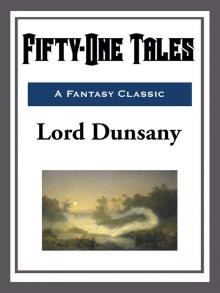 Fifty-One Tales
Fifty-One Tales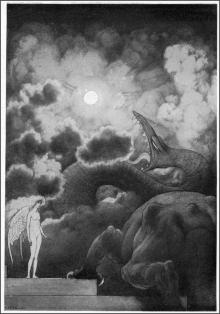 Time and the Gods
Time and the Gods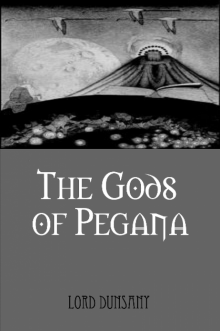 The Gods of Pegana
The Gods of Pegana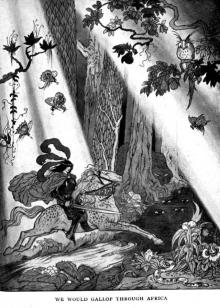 A Dreamer's Tales
A Dreamer's Tales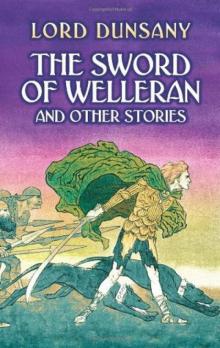 The Sword of Welleran and Other Stories
The Sword of Welleran and Other Stories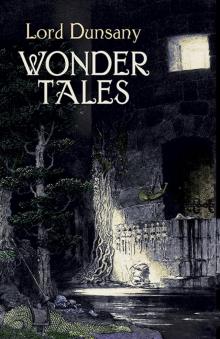 Tales of Wonder
Tales of Wonder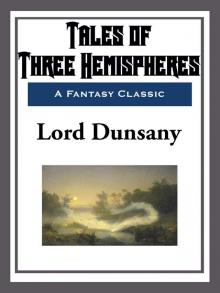 Tales of Three Hemispheres
Tales of Three Hemispheres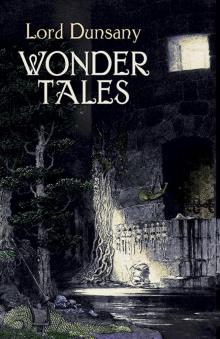 The Book of Wonder
The Book of Wonder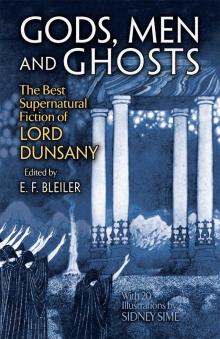 Gods, Men and Ghosts
Gods, Men and Ghosts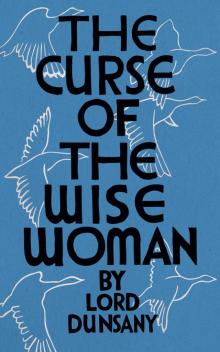 The Curse of the Wise Woman
The Curse of the Wise Woman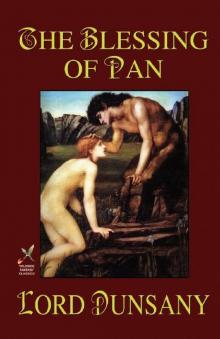 The Blessing of Pan
The Blessing of Pan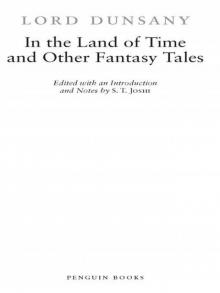 In the Land of Time
In the Land of Time